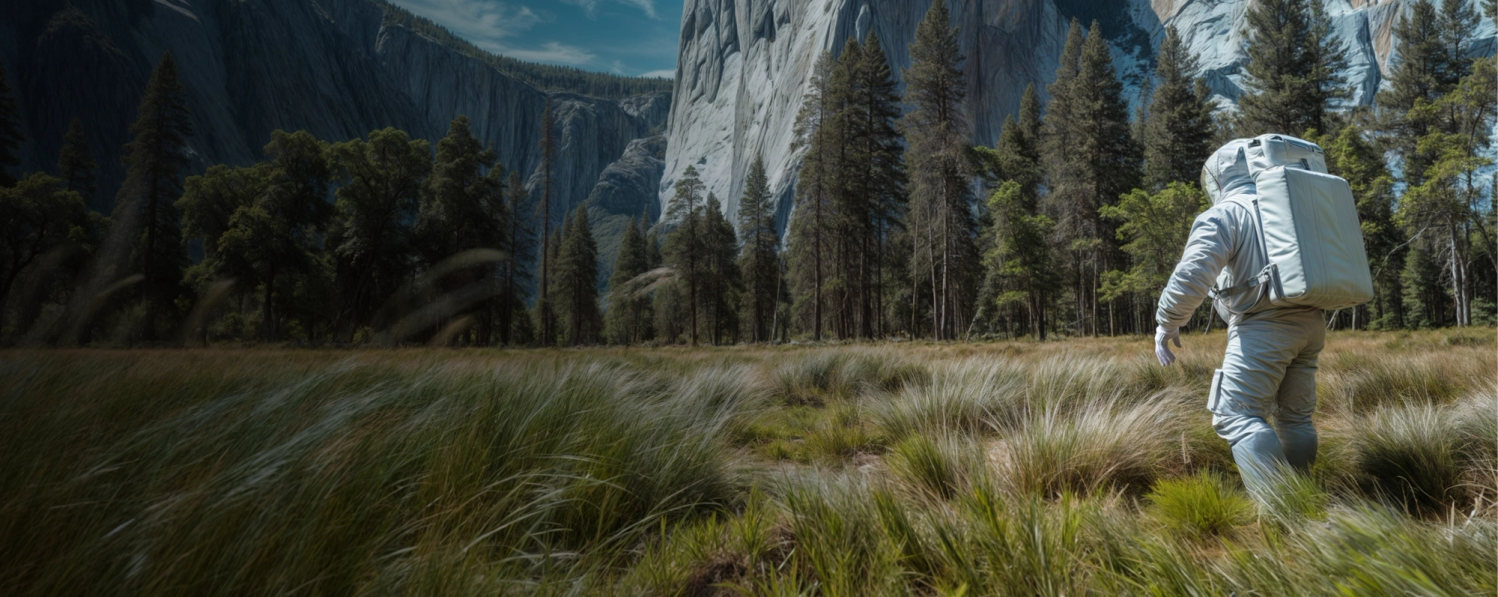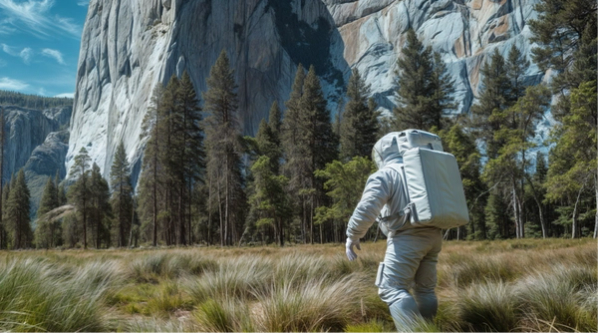We Tried an Out-of-Home Ad Campaign. Should You?

Few businesses in the tech world are investing in out-of-home (OOH) ad campaigns these days. In an unusual move, we used one of our own external-facing creative service teams to help us try one for ourselves. Learn how it's landed us more call requests and higher direct/organic search rates below.
No one targeting big tech bothers with out-of-home ads anymore. Why would they? Their targets’ most noteworthy hangouts are defiantly digital, save for the odd convention—a good chunk of which is spent staring at screens, anyway.
It begs the question: Why, for the love of god, did we pour money into smearing our branding along billboards, bus stop ads, rideshare vehicles, coffee trucks and airport banners across San Francisco this summer?
And how did this campaign result in a 140% increase in call requests, and a 77% increase in direct traffic from California over the last year?
Why We Did It
Because most businesses like ours aren’t doing it. Working in creative marketing for as long as we have, we’ve picked up a time-honored trick: Look at what your competitors are doing, and do the opposite.
Our industry is particularly saturated with digital content—we and our competitors are doing our best to show big tech we’ve got every possible avenue covered with largely online-focused brand assets (social media ads, YouTube/IG/TikTok videos, etc.).
“We’ve always toyed around with the idea of testing an out-of-home campaign, but we didn't decide to pull the trigger until we could link it to something that made sense for such a costly initiative,” said Christina Licastro, Senior Marketing Manager at Superside.
With everyone putting every available dollar on the screen, we noticed not many brands thought to go out and touch grass/pavement/car doors. Everyone seemed to forget that people in tech do in fact leave the house. And when they do, the bustling world around them is ample real estate.
We picked our target.
We didn’t just plaster them about the city indiscriminately. Tech has made up a good chunk of our customer base for some time, which makes San Francisco’s Silicon Valley a prime target. Especially during this year’s SaaStr and Dreamforce.
“When we realized there was a need to market to marketers at tech companies, we thought doing an out-of-home during SaaStr and Dreamforce this year made the most sense to ensure lots of people would be exposed to our ads,” Licastro explained.
Knowing these events would play host to hundreds of openly-curious decision makers in the space, we deviously scattered our messaging across the chrome and concrete plains surrounding each event from September 4th through the 17th, starting right when the events began. We slapped our branding over every available inch, right down to coffee trucks outside event centers—attendees coming out for a break would be greeted with caffeine and some gently-provoking Superside messaging (told you we were devious).
We were smart about it.
We didn’t expect billboards and rideshares to do all the legwork, of course. We made sure they were part of a bigger plan to bring prospects down the funnel; one that’d run from September to December throughout the state. “We weren’t expecting to see results just by doing an OOH campaign,” said Licastro. “We had multiple initiatives under the campaign: an event, a paid advertising campaign, direct mail and email marketing in place.”
We knew spending money on out-of-home (OOH) was a risk. But we made sure it wasn’t a dumb risk. It had to pay off in top of funnel awareness, and—importantly—preparing the creative for it couldn’t be a tax on our internal creative marketing teams.
If only there were a service capable of providing ambitious brands with frictionless creative that drives marketing outcomes!
How We Did It
When we put it like that, the solution was pretty obvious. We did the thing we’re always telling other businesses to do, and used one of the dedicated creative teams we use to make creative for other businesses. We got high on our own supply. Here’s how it panned out.
1. Project Briefing & Ideation
“The marketing team took the lead on the decision to run the campaign,” said Jaime Waddington, a Digital Content Producer and Creative Lead on the project’s assigned team. “[They told us] they were planning to run an OOH campaign in the San Francisco area this September.”
Waddington said the marketing team came to them with a specific concept in mind, and charged the creative team with bringing it to life. She explained that the *client* (teehee) campaign required unique and specific images that couldn't be sourced from stock photos, and would need to be built from scratch with their director of photography.
Waddington and the team wanted to emphasize the “cheeky brilliance” of marketers using Superside to appear secretly brilliant at design. “These individuals needed to be dressed as either creatives or marketers and had to be capable of acting to convey cheeky, awkward, yet satisfied smiles.” As is often the case with marketing aimed at marketers, they landed on a series of office-based photos.
2. Project Production
They moved way quicker than our already-very-busy internal team could have, to be honest.
“The project had a tight timeline, which required us to act swiftly,” said Waddington. “We received the brief on July 26, 2023, and our deadline to complete the photo shoot and deliver the images was set for August 14, 2023.” In two weeks, Waddington and the team needed to secure a suitable studio location, identify and recruit the required talent, organize equipment, handle hair and makeup, procure props and decor, and manage the myriad of other logistical details to bring a big project to fruition.
Make no mistake—this would’ve had our usual creative and marketing teams ripping their hair out. For our new partners, however, it was surprisingly easy.
“We approached this campaign in the same manner in which we handle projects with our non-Superside clients,” Waddington recalled. “Despite the client being an internal team, we followed the same rigorous and structured approach that we employ for external clients.”
A bit annoying, really. We’d hoped to report that they found our needs particularly challenging; beyond the scope of normal creative marketing requests. Bummer.
3. Asset Review & Completion
On the contrary, they came to us with multiple options for how this could play out with a comprehensive pre-production deck.
“It included lighting and camera treatment suggestions, multiple talent options, location choices, wardrobe styling suggestions, hair and makeup ideas, and props and decor lookbooks,” said Waddington. “This step ensured that the Superside marketing team had a range of creative choices to align with the campaign concept.”
The use of a live link for the marketing team to view images as they were shot was a game-changer. “Laura, our producer, played a pivotal role in consolidating and relaying feedback from the marketing team. This real-time feedback loop allowed for immediate feedback and approvals, ensuring that the project stayed on track and ran smoothly.”
The ability to peek in on the creative project in real-time was unexpected, as was the speed of feedback and turnaround on requested variations.
How It Played Out
Underwhelming, right? You’d think we’d hit a major snag, like the creative team crapping the bed on such a short timeline, or an electrical fire that burned all the paper at the billboard factory (editor note: Marketing does not know how billboards are made). But nope. We just got a bunch of billboards, bus/airport ads and vehicle wraps that had some great creative and smart-ass copy.
We didn’t burn out our marketing or design teams. No one had to rub their temples or sit through boring meetings with a design team that didn’t get them. It was just… easy. Well, except for that 3 a.m. production call from the marketing team in Toronto. Nothing coffee and a nap can’t solve.
And it’s paying off right now.
Considering how long an OOH campaign can take to start moving the proverbial needle, we’re seeing waaaay more success than we could’ve asked for.
Call requests from California jumped 140% from this time last year. We looked at our performance in other states as a control, and it’s clearly outperforming our non-OOH states. The next best state was Texas, at 92%.
We’re also enjoying a huge spike in organic search and direct traffic (two sources reliant on brand awareness) in California. Organic search in the state grew 47%, and direct traffic shot up 77% compared to 2022. “Someone even saw our airport banner and booked a call just from that,” said Licastro.
Needless to say, the results so far are promising. And as we frantically check our performance, they’re not waning.
What To Learn From It
Aside from the obvious “hooray, we did it”s and “they said it couldn’t be done”s, we realized a few unexpected efficiencies along the way.
Namely the ability of our company’s own teams to take an idea from an at-capacity marketing team and just run with it.
Beyond that, they proved to be more agile than we could’ve hoped: A two week turnaround time for a project of this scale isn’t something most design teams can handle without significant issue. The dedication and purpose-built nature of the team we were assigned was the only thing that made it possible.
Equally surprising was the heretofore unknown technology that would allow us to collaborate in real-time with our new partner, despite them being countries and sometimes continents away.
It’s the sort of thing you boast about when you’re marketing to your clients—and admittedly, we’re still doing right now—but it’s invigorating as marketers to learn that the service you’re promoting doesn’t just do what it says it does (frictionless design at scale; call now, beat the rush!), but has a few neat tricks up its sleeve too.
Also, hooray, we did it! They said it couldn’t be done.
Tips for Your OOH Campaign
There's no better source for creative OOH advice than our creative master of ceremonies. Piotr Smietana, Director of Brand & Marketing Creative at Superside, has some design and marketing tips for those considering an "offline" campaign of their own.
Out-of-Home Marketing Tips
- Localized relevance: Tailor your message to the local audience. A locally relevant message can resonate more deeply and create a stronger connection (like we did with our messaging around tech companies in SF).
- Digital integration: Marry your OOH campaign with digital elements. Use QR codes or social media hashtags to bridge the physical and digital realms, making it interactive and measurable.
- Ad placement timing: Consider the timing of ad placements. It's not just where, but when. Aligning your campaign with relevant local events or seasons can enhance its relevance and impact (we did that with SaaStr).
- Unexpected locations: Explore non-traditional OOH spaces. Sometimes a quirky or unexpected location can generate more buzz and engagement than a standard billboard, like our Airport ads.
- Content rotation: Regularly rotate your content to keep it fresh and engaging. This can be a game changer in holding the audience's attention over time. This can be achieved with digital billboards or bus shelter ads.
- Measure and adjust: OOH isn't a set-and-forget endeavor. Continuously measure the effectiveness of your campaigns, and be prepared to pivot based on the insights gathered.
Out-of-Home Design Tips
- High-Impact imagery: Utilize bold, high-quality imagery that captures attention even from a distance. Less is more—avoid clutter and keep the visual narrative simple and striking.
- Bold typography: Employ bold, readable typography that can be easily digested from a distance. Your message should be clear and legible to anyone passing by, even at a glance.
- Experimental formats: Don’t shy away from experimenting with new formats and technologies. Whether it's AR-enhanced billboards or interactive installations, pushing the creative envelope can result in a more engaging and memorable campaign.
- Narrative continuity: Craft a compelling narrative that flows seamlessly across different OOH mediums and other advertising channels. Make sure you stay consistent in all these channels (for example, a landing page should reflect what you had on the billboard).
- Consistent aesthetics: Ensure a visual consistency across all campaign materials to build a recognizable brand persona that's easy for audiences to identify and recall.
And of course, don't put it all on your creative team. They've got their hands full as it is.
Our team of dedicated creatives has countless years of knocking it out of the park with OOH between them. And we're always happy to share the wealth.
David is a Senior Content Marketer at Superside. A former journalist with bylines too numerous to enumerate, he brings his love of storytelling and semantics to the marketing world. Recognizing the sizable gaps in the creative-as-a-service (CaaS) sector, he jumped at the chance to fill the creative void for ambitious brands. In his off hours, he enjoys loud music, making vegan meals and being made fun of for making vegan meals. He’ll gladly talk to you about any of the above on LinkedIn.














